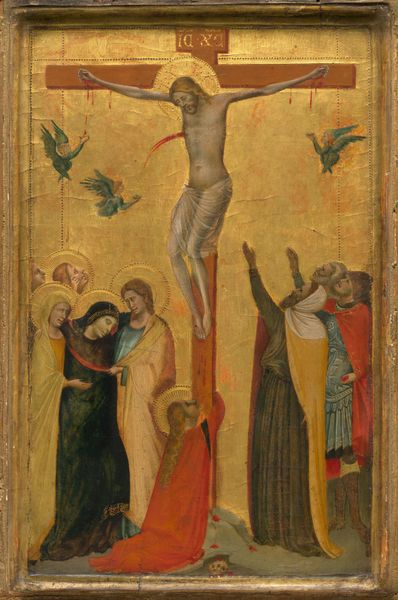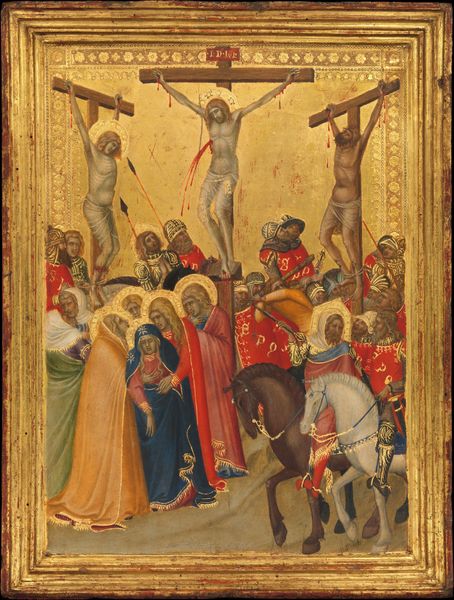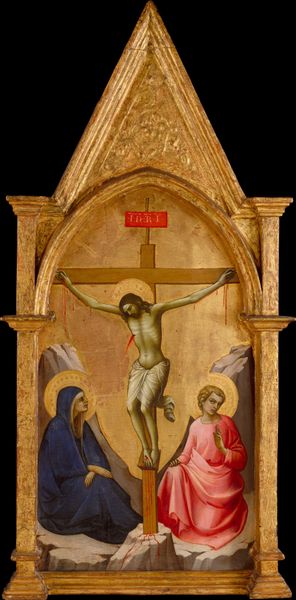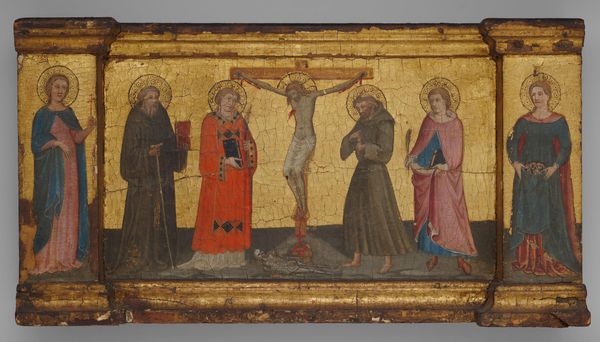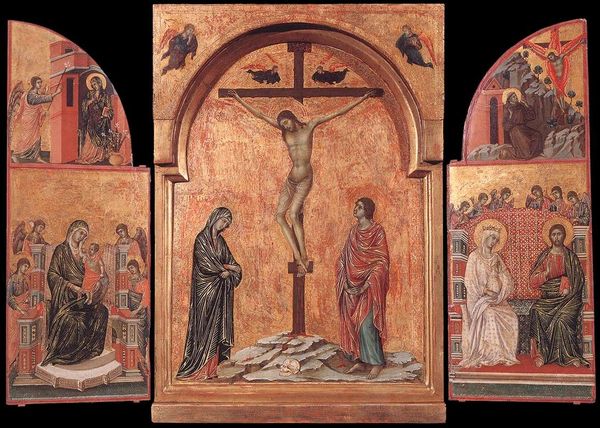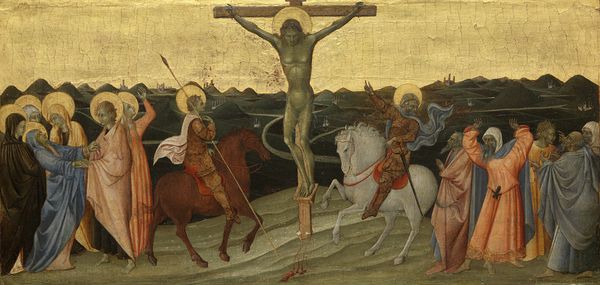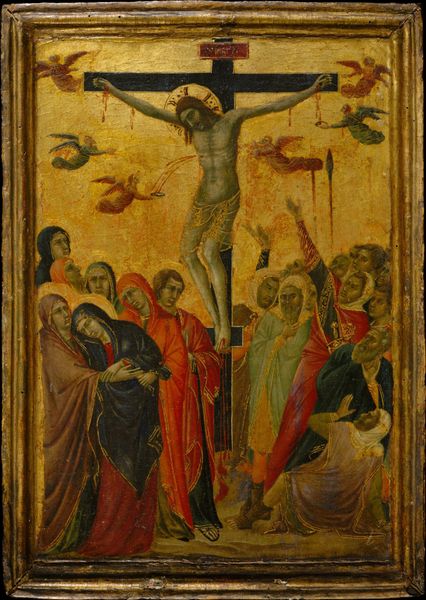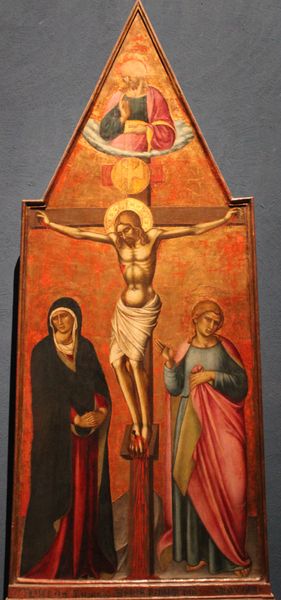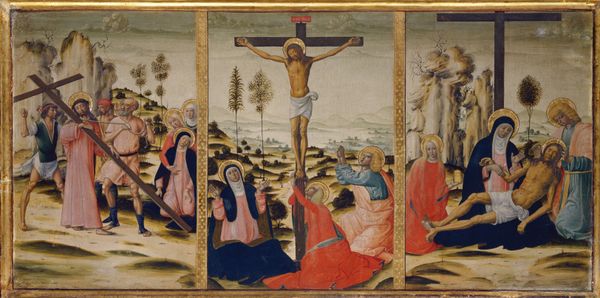
tempera, painting
#
portrait
#
medieval
#
narrative-art
#
tempera
#
painting
#
figuration
#
oil painting
#
chiaroscuro
#
history-painting
#
italian-renaissance
Copyright: Public domain
Curator: It feels like grief solidified into paint. Just… heavy. Editor: Indeed. This panel, known as "Crucifixion", was rendered in tempera on wood by Luca di Tommè around 1362, deep within the Italian Renaissance. Curator: Renaissance or not, it’s brutal. I mean, you see so many crucifixions, but this one feels different. Raw, somehow. It's like a window into genuine sorrow, not just a symbol of it. The people seem so…lost. Editor: Notice how di Tommè employs stark contrasts. The luminous gold background pushes forward, intensifying the dark figures. And observe the composition, segmented into these distinct lobes that mirror Byzantine altarpieces, yet bursting with intense emotion typical of its time. There’s this pull between tradition and innovation, formality and feeling…it’s quite something. Curator: You know, the artist places Jesus in a really small segment. Usually the figure on the cross dominates, but here he's just another element amongst all this human chaos. It sort of diminishes him in an interesting way, making the event feel almost more tragically human. Editor: Symbolism plays a significant role here, of course. Each figure, gesture, and color carries immense religious weight. The arrangement invites viewers to contemplate the themes of faith, sacrifice, and salvation as they were understood then, within the socio-political currents of that historical context. Curator: Maybe that's why it feels so timeless, even though it's anchored in the 14th century. That core sorrow is, unfortunately, still pretty resonant. We can see humanity here in all of its darkness. Editor: Absolutely. The visual language di Tommè crafts connects us to cultural memory, revealing continuity across the ages. Curator: So, yeah, maybe it's less about what happened then and more about how we carry that memory. I think that makes it special. Editor: Agreed. It makes you appreciate the enduring capacity for art to convey complex emotion across such vast divides of time.
Comments
No comments
Be the first to comment and join the conversation on the ultimate creative platform.


